2024年1月Java项目开发指南7:增删改查与接口测试
我们之前,是从Controller层写到Service层,然后mapper层。
接下来我们反过来,从mapper层写到Controller层
两种方式都可以,你喜欢就行,甚至你先写service层也可以,全凭个人喜欢。
在本文中,就不解释太多了,直接给出代码,对于关键地方,我会圈出来。
如果有问题,可以直接在本文首发地址(博客园 萌狼蓝天)评论留言,或者进入问答社区提问:ask.xrilang.top
Mapper
package cc.xrilang.serversystem.mapper;
import cc.xrilang.serversystem.domain.Users;
import org.apache.ibatis.annotations.*;
import java.util.List;
@Mapper
public interface UsersMapper {
@Insert("INSERT INTO users (user_nickname, user_account, user_password, user_reg_time, user_last_login_time, user_status, user_identity, remarks) VALUES (#{userNickname}, #{userAccount}, #{userPassword}, #{userRegTime}, #{userLastLoginTime}, #{userStatus}, #{userIdentity}, #{remarks})")
void insertUser(Users user);
@Select("SELECT * FROM users")
List<Users> selectAllUsers();
@Select("SELECT * FROM users WHERE user_id = #{userId}")
Users selectUserById(long userId);
@Update("UPDATE users SET user_nickname = #{userNickname}, user_account = #{userAccount}, user_password = #{userPassword}, user_last_login_time = #{userLastLoginTime}, user_status = #{userStatus}, user_identity = #{userIdentity}, remarks = #{remarks} WHERE user_id = #{userId}")
void updateUser(Users user);
@Delete("DELETE FROM users WHERE user_id = #{userId}")
void deleteUserById(long userId);
}
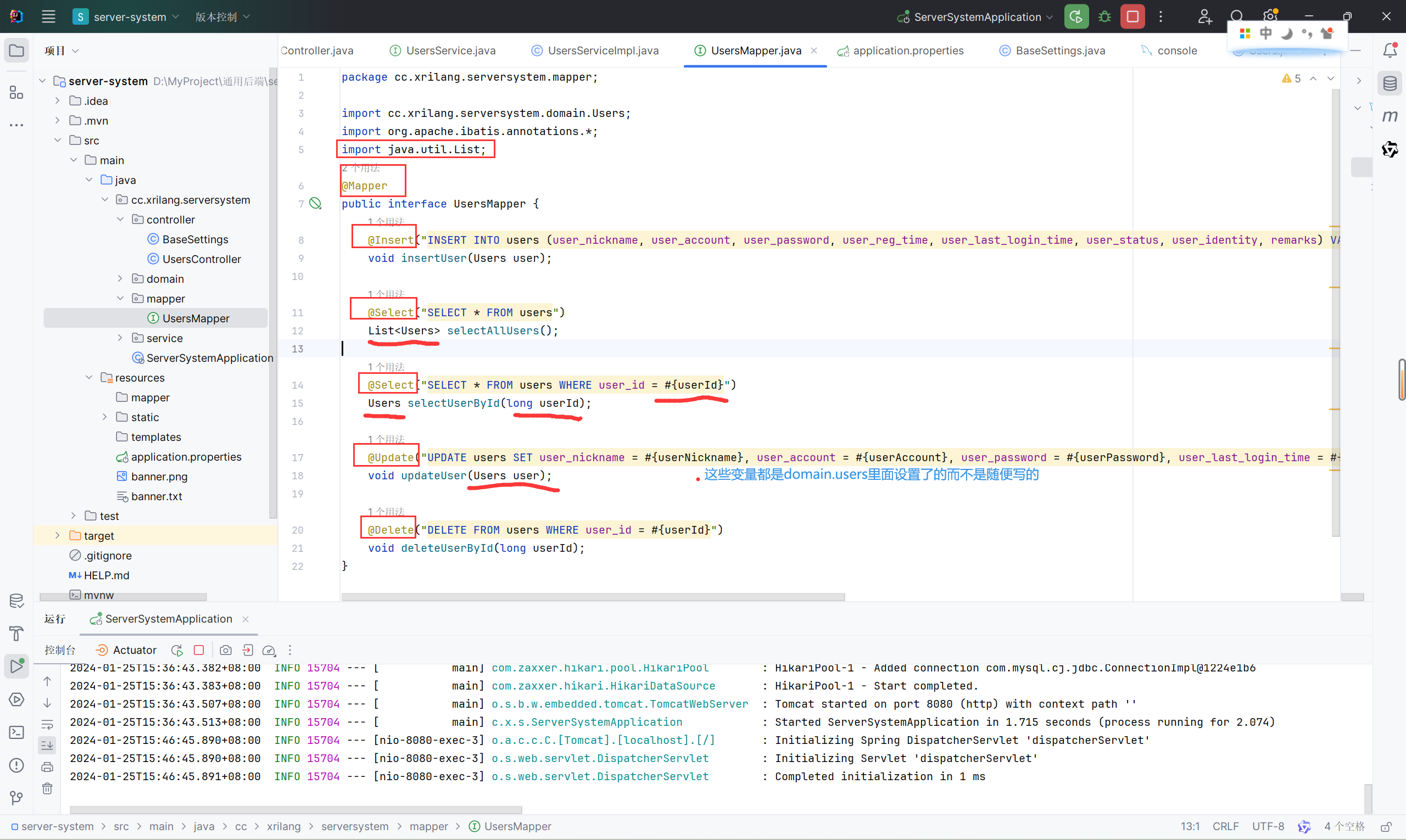
Service(Interface)
package cc.xrilang.serversystem.service;
import cc.xrilang.serversystem.domain.Users;
import java.util.List;
public interface UsersService {
Users createUser(Users user);
List<Users> readAllUsers();
Users readUser(long userId);
Users updateUser(Users user);
void deleteUser(long userId);
}
Service(impl)
package cc.xrilang.serversystem.service.impl;
import cc.xrilang.serversystem.domain.Users;
import cc.xrilang.serversystem.mapper.UsersMapper;
import cc.xrilang.serversystem.service.UsersService;
import org.springframework.beans.factory.annotation.Autowired;
import org.springframework.stereotype.Service;
import java.util.List;
@Service
public class UsersServiceImpl implements UsersService {
@Autowired
private UsersMapper usersMapper;
@Override
public Users createUser(Users user) {
usersMapper.insertUser(user);
return user;
}
@Override
public List<Users> readAllUsers() {
return usersMapper.selectAllUsers();
}
@Override
public Users readUser(long userId) {
return usersMapper.selectUserById(userId);
}
@Override
public Users updateUser(Users user) {
usersMapper.updateUser(user);
return user;
}
@Override
public void deleteUser(long userId) {
usersMapper.deleteUserById(userId);
}
}
Controller
package cc.xrilang.serversystem.controller;
import cc.xrilang.serversystem.domain.Users;
import cc.xrilang.serversystem.service.UsersService;
import org.springframework.beans.factory.annotation.Autowired;
import org.springframework.stereotype.Controller;
import org.springframework.web.bind.annotation.*;
import java.util.List;
@Controller
/***
* 用户控制器
* 如果这里写的controller 那么想返回实体数据而不是一个页面的话,那后面的方法需要写上@ResponseBody
* 如果这里写的@RestController 那么返回的是json数据,后面的方法不需要写上@ResponseBody
*/
@RequestMapping("/users")
public class UsersController {
@Autowired
private UsersService usersService;
// 读取用户列表
@GetMapping
@ResponseBody
public List<Users> readAllUsers() {
return usersService.readAllUsers();
}
// 增加用户
@PostMapping
@ResponseBody
public Users createUser(@RequestBody Users user) {
return usersService.createUser(user);
}
// 读取单个用户
@GetMapping("/{userId}")
@ResponseBody
public Users readUser(@PathVariable long userId) {
return usersService.readUser(userId);
}
// 更新用户
@PutMapping
@ResponseBody
public Users updateUser(@RequestBody Users user) {
return usersService.updateUser(user);
}
// 删除用户
@DeleteMapping("/{userId}")
@ResponseBody
public void deleteUser(@PathVariable long userId) {
usersService.deleteUser(userId);
}
}
增删改查都写好了,接下来去测试
测试
新增用户
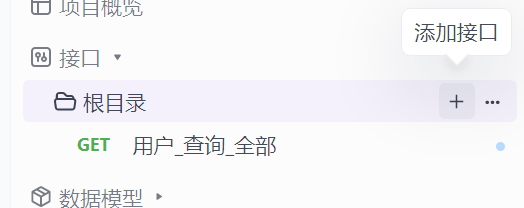

要注意,这个接口是需要参数的
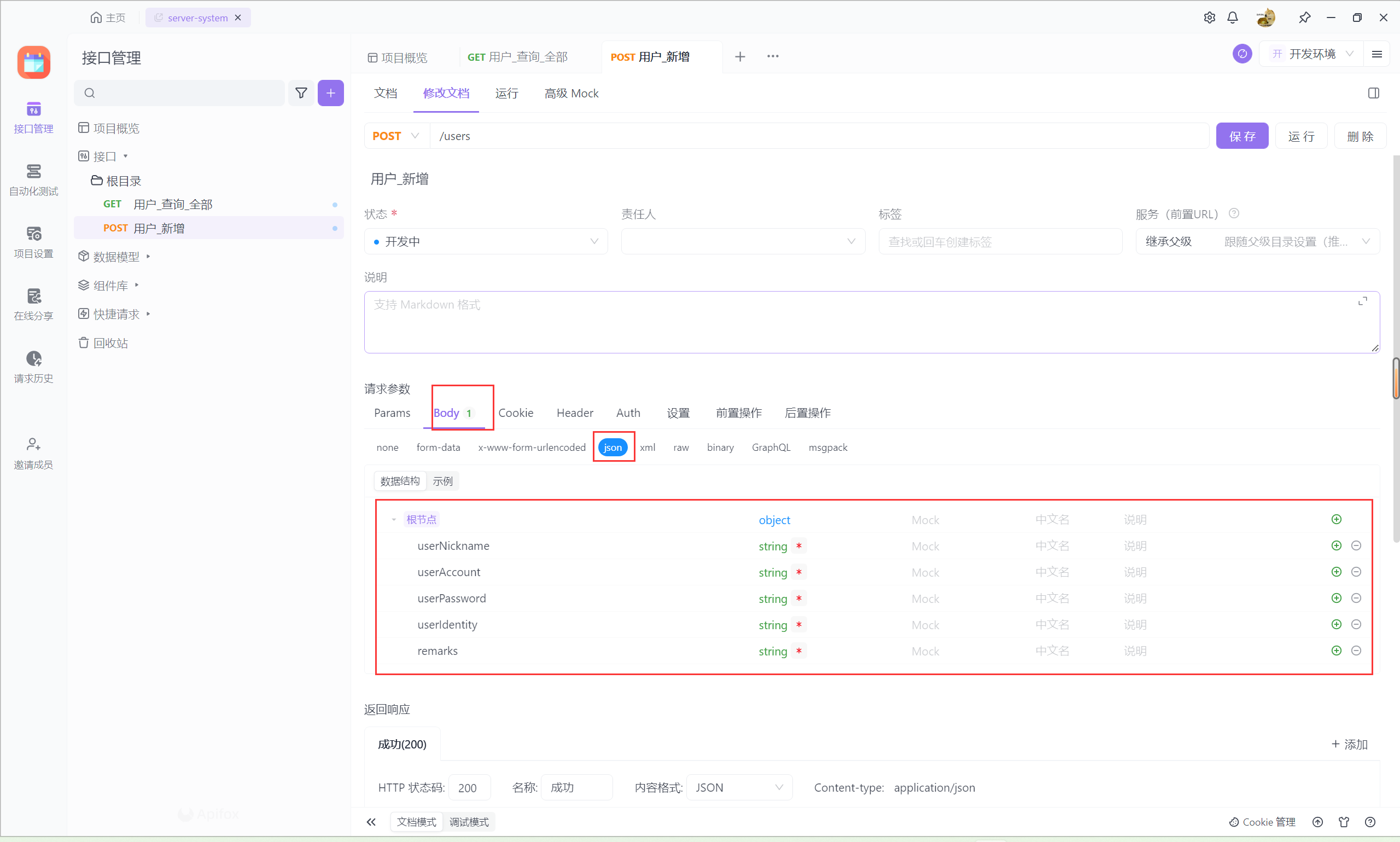
请注意,这些参数不是乱写的,要和domain.users里面设置的一样
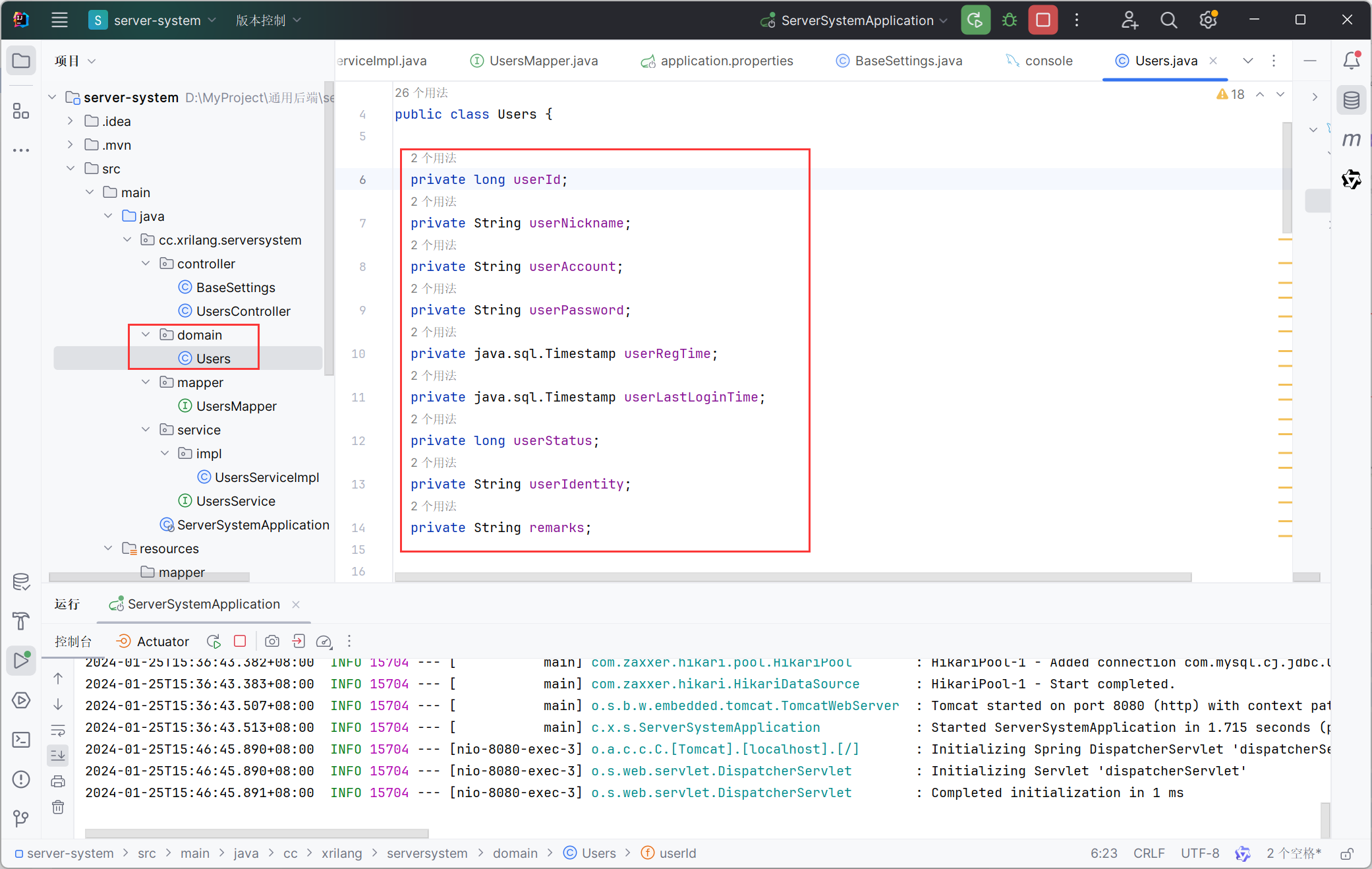
同时,也不是每个都必须写上去的。
比如用户ID是自增的,我们可以不用填
注册日期数据库会自动添加,我们不用填
登录时间不是必须的,我们不用填。
设置好后,保存,运行
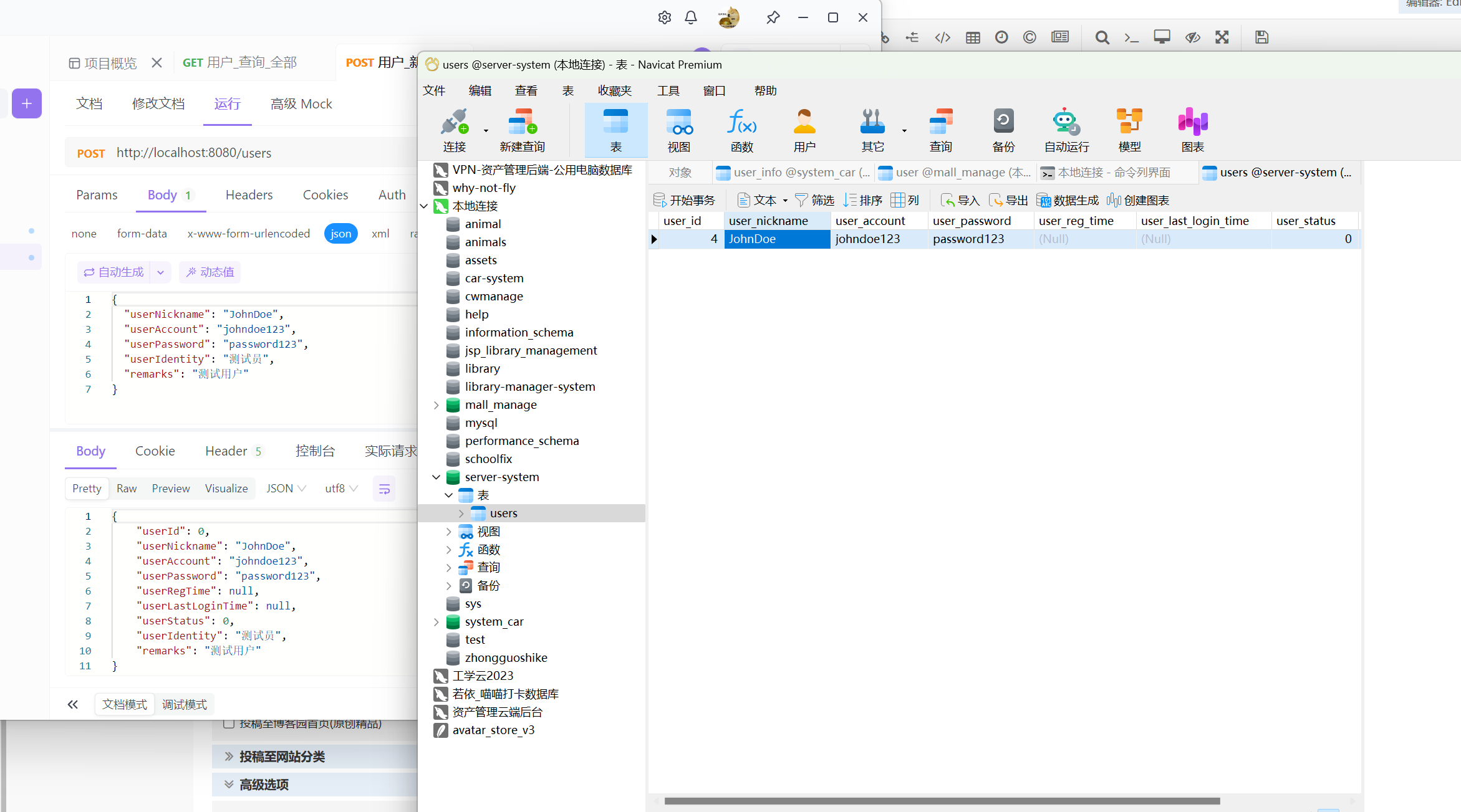
可以看到数据库中新增了一条数据。
我们还可以为参数写一些注释,以便我们后续查看
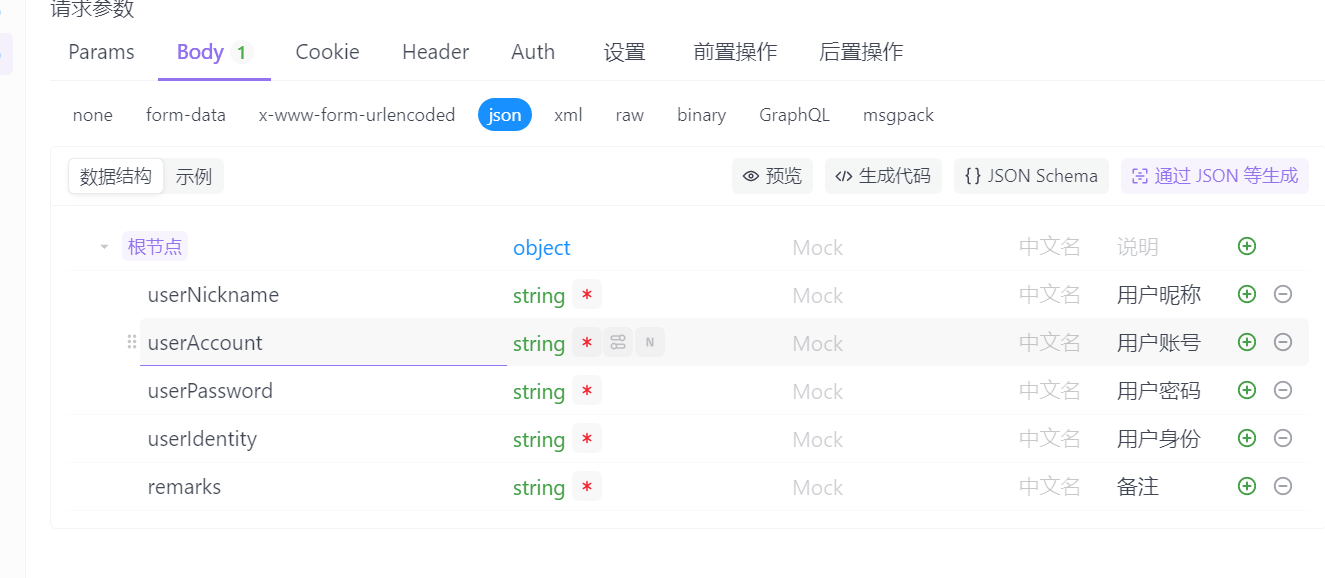
还可以结合Mock生成数据以便测试
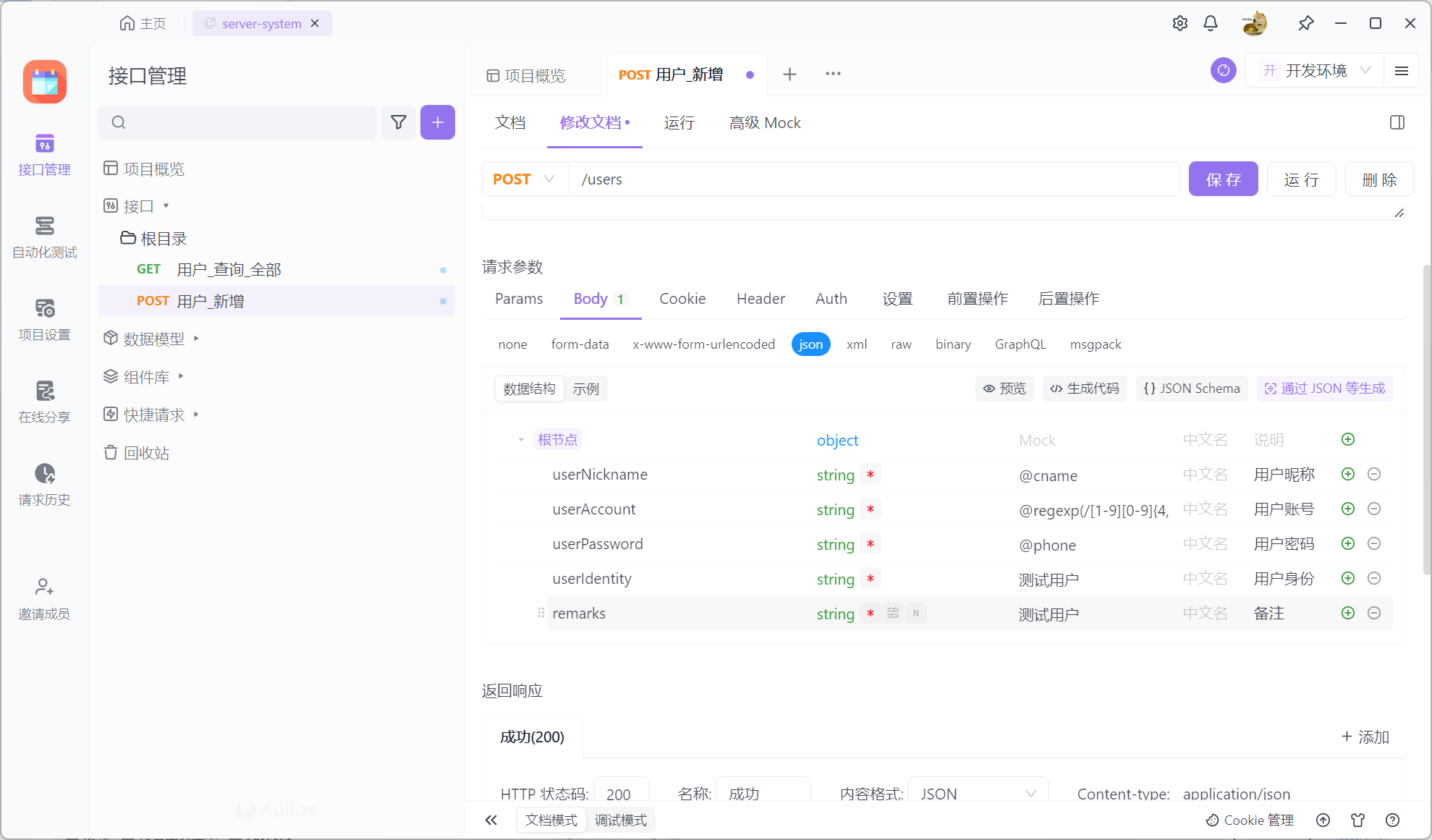
你发现,这个注册我只需要前端填写五个参数
那么其他字段怎么办?交给后端处理,那么,我们来完善后端吧!
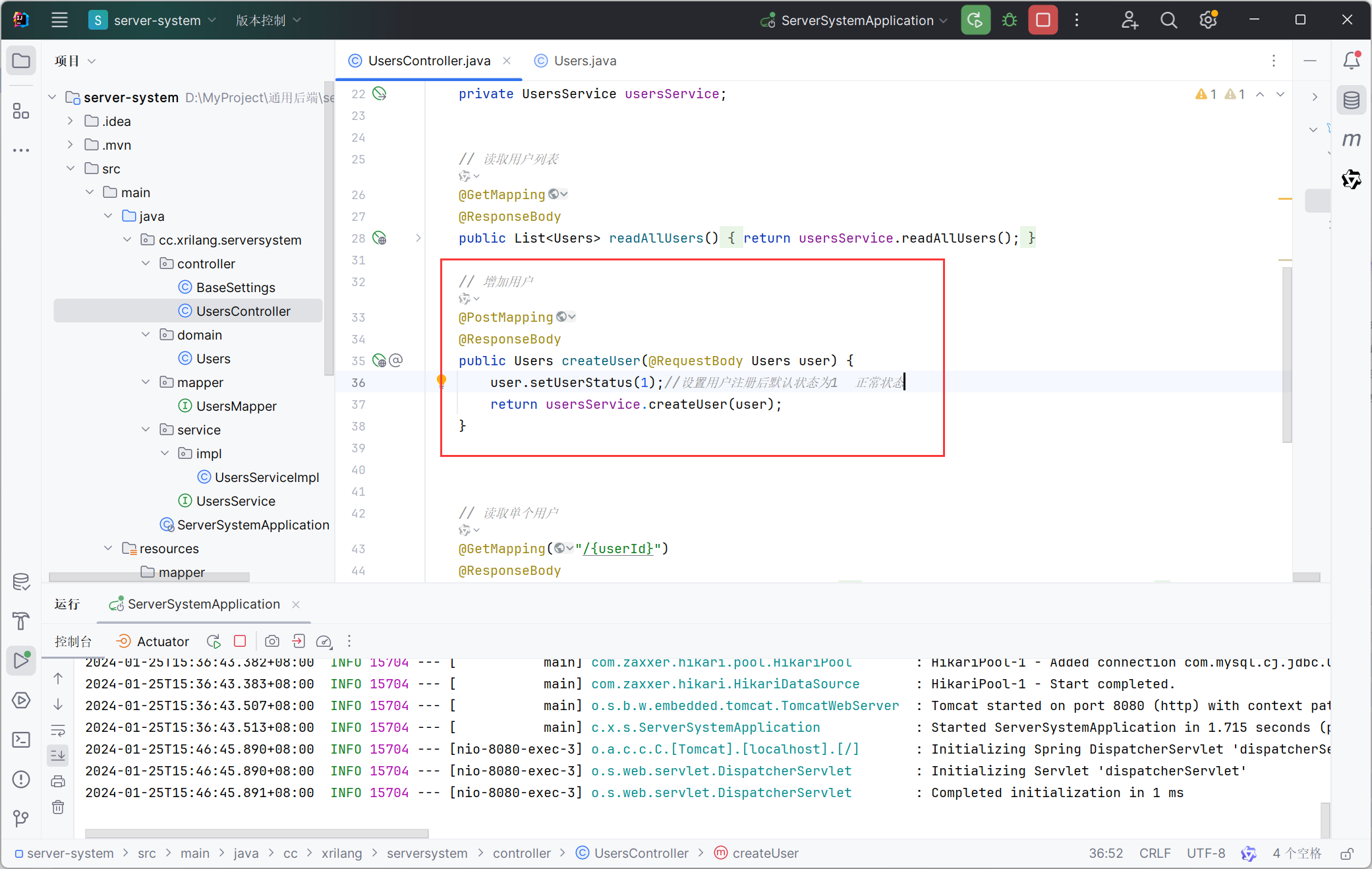
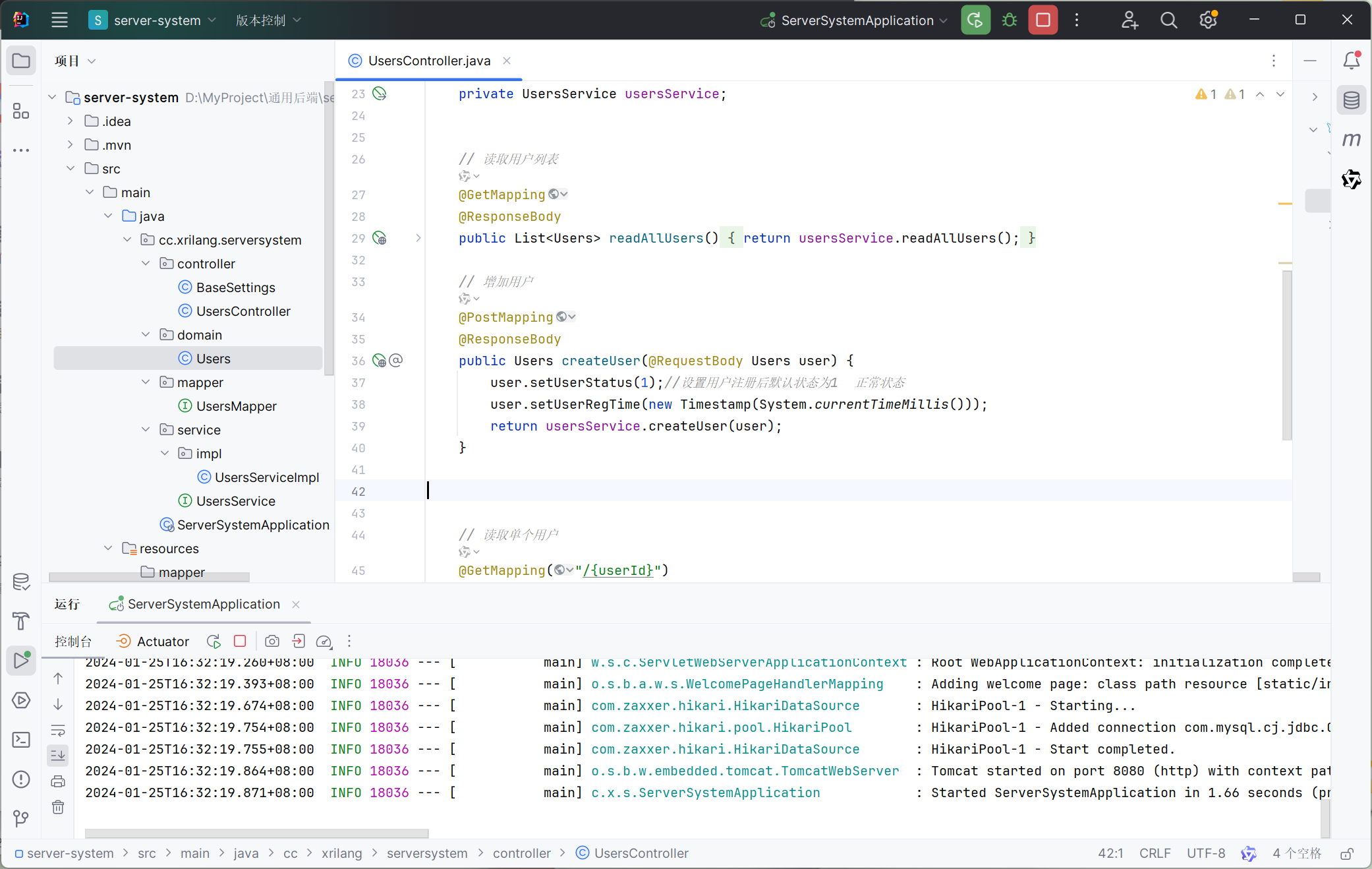
你可以在后端设置一些前端不用填写,但是添加数据时又应该有数据的参数
然后重新运行,测试
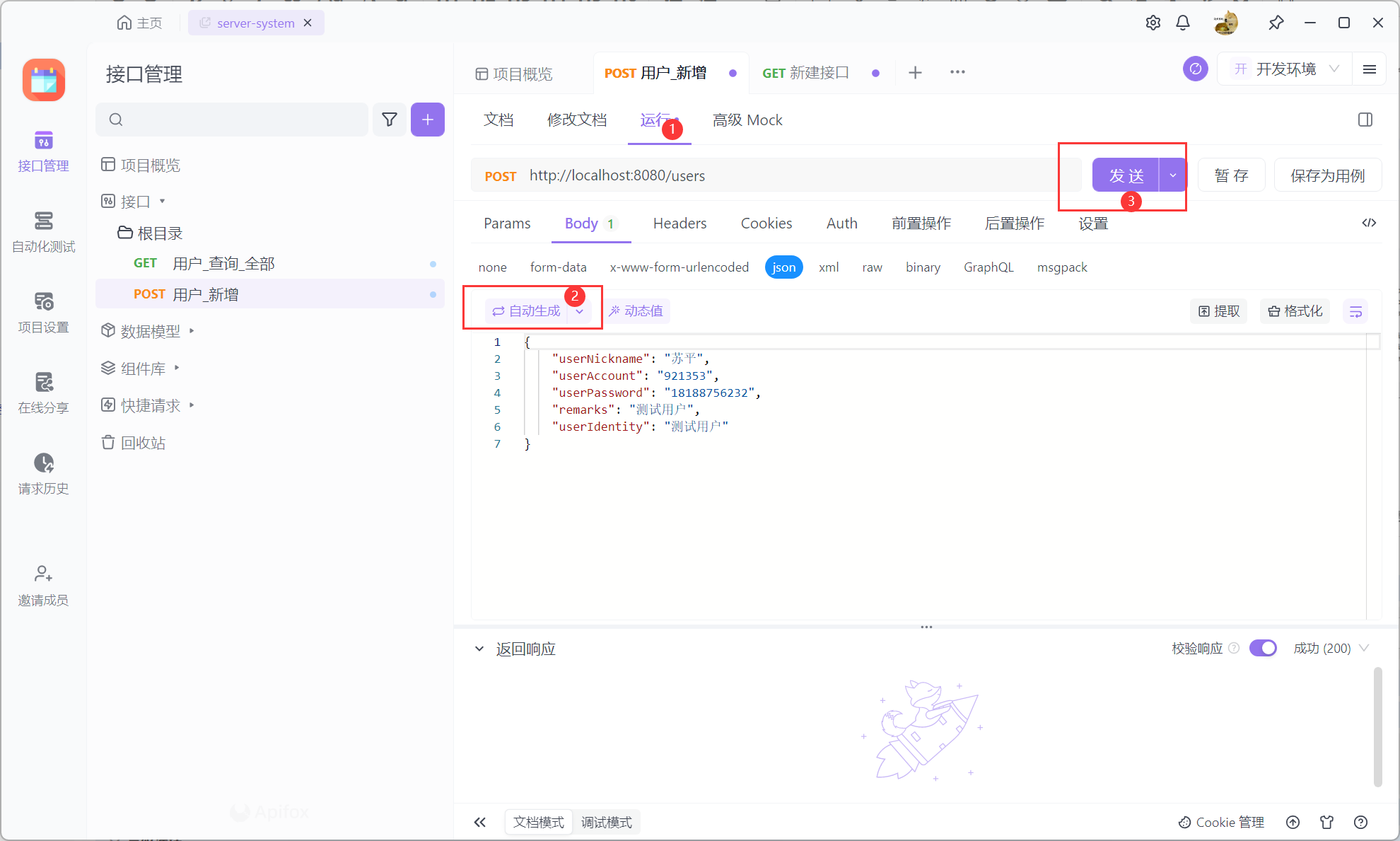
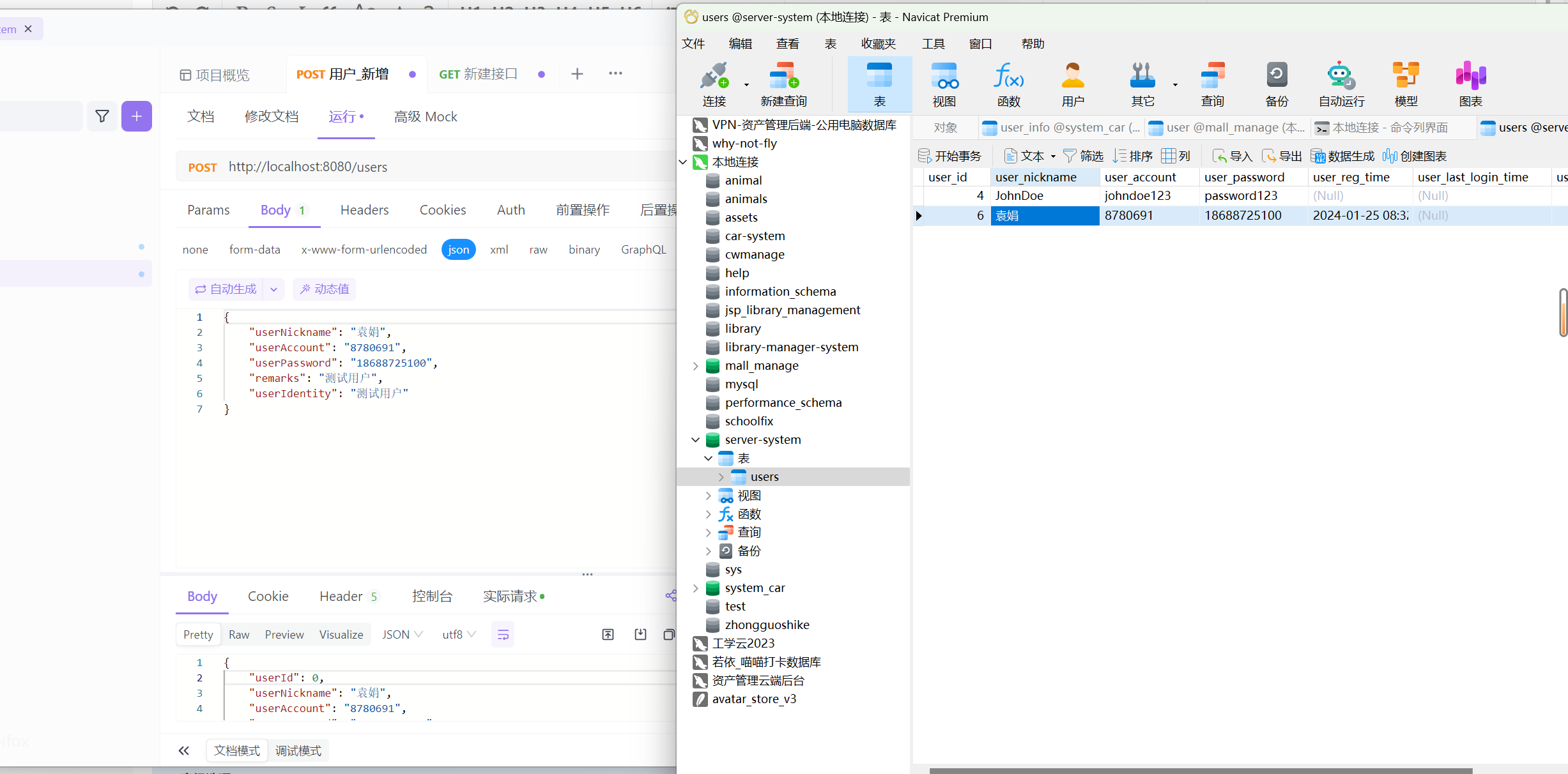
很好,再考虑一下,如果这个用户已经注册了呢?
因此,我们需要在后端判断一下用户是否已注册,你可以尝试自己写一下,也可以看下一篇笔记我对这个功能实现的详细补充。
查询单个用户

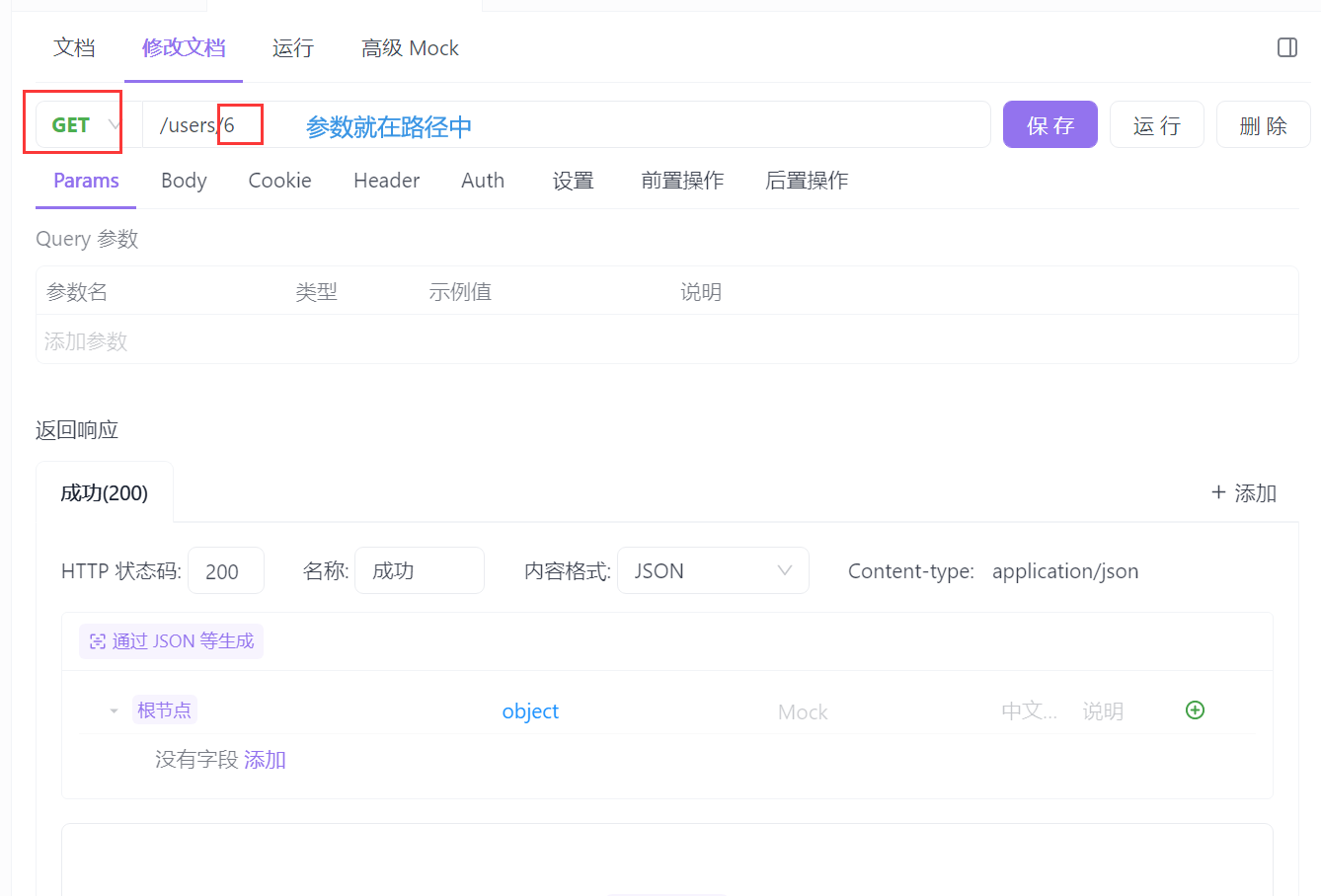
运行
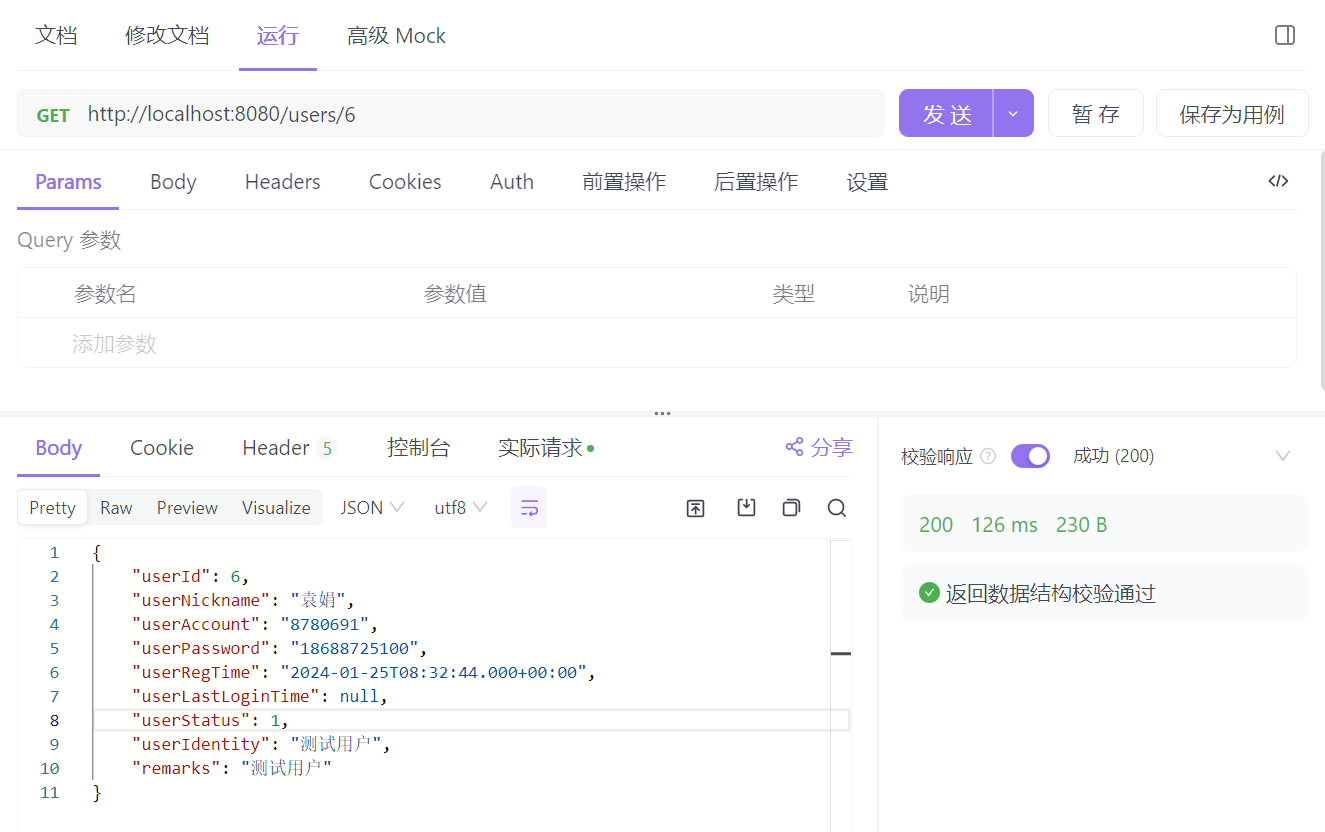
好,假设你明明有数据,但是查询出来,比如姓名为null,账号为null,全都是null
这怎么办?
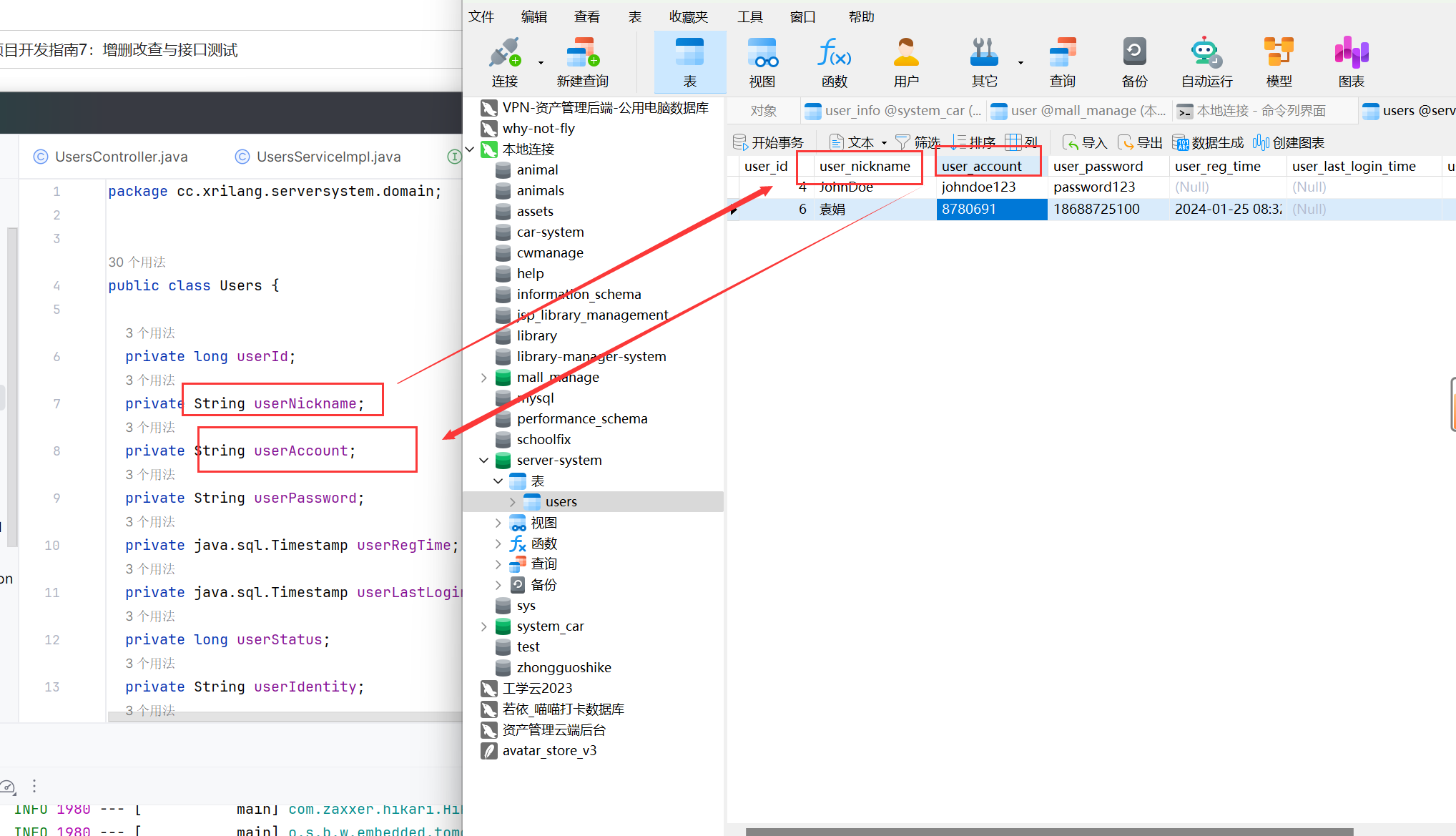
这种情况,往往是因为数据库字段名称和你Java对象中的字段名称命名风格不一致导致的。
数据库中用的下划线隔开,然而POJO对象中却是驼峰命名法。
解决这个问题的方法有很多,最简单的方法就是在配置文件中添加一条自动命名匹配的配置:
# 使用该配置可以让 MyBatis 自动将 SQL 中查出来的带下划线命名的字段, 自动转换 为驼峰命名,再去匹配类中的属性。
mybatis.configuration.map-underscore-to-camel-case=true
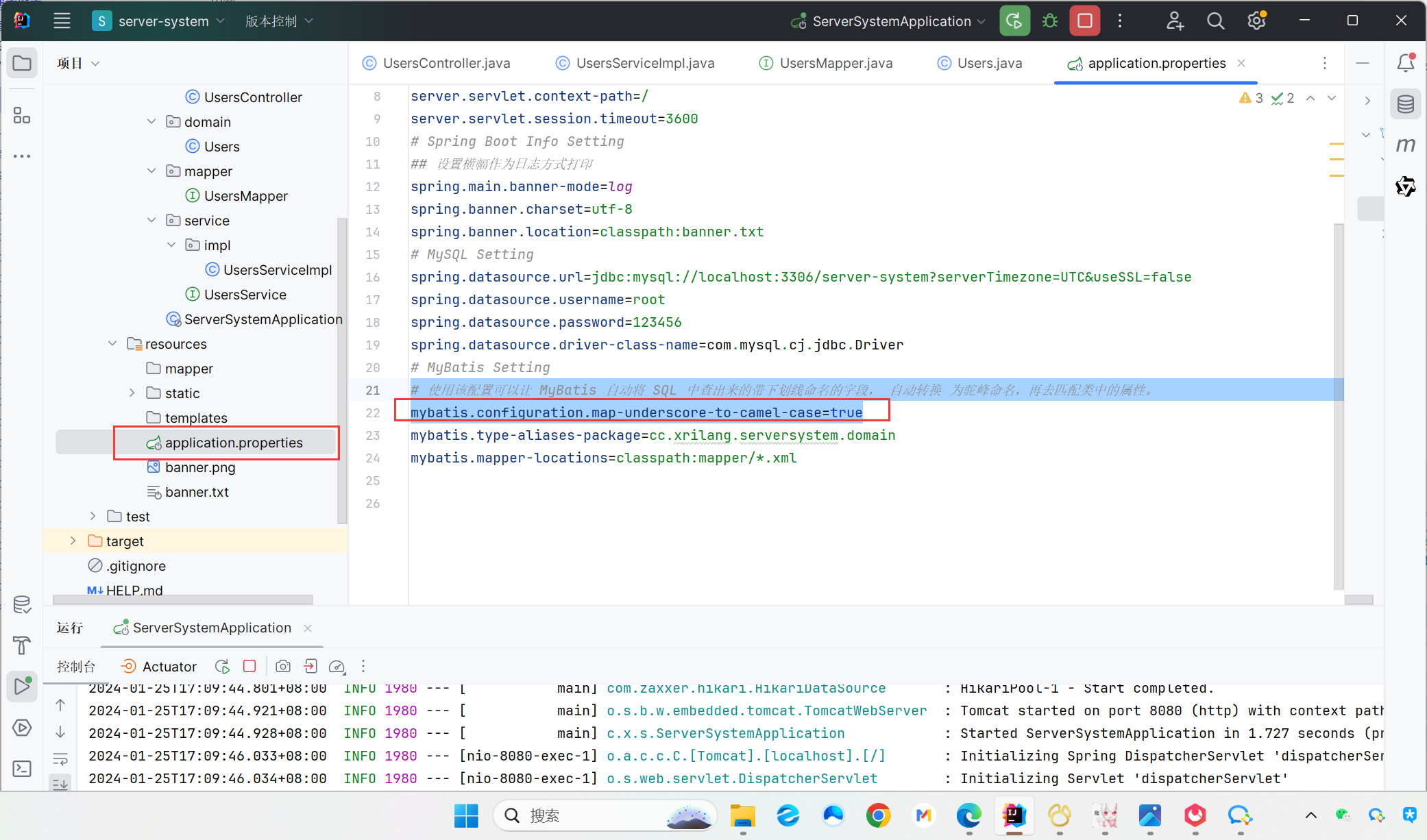
删除用户
删除用户就简单了,参数也是就在URL中的


要注意的是,这次不是get,而是delete哦
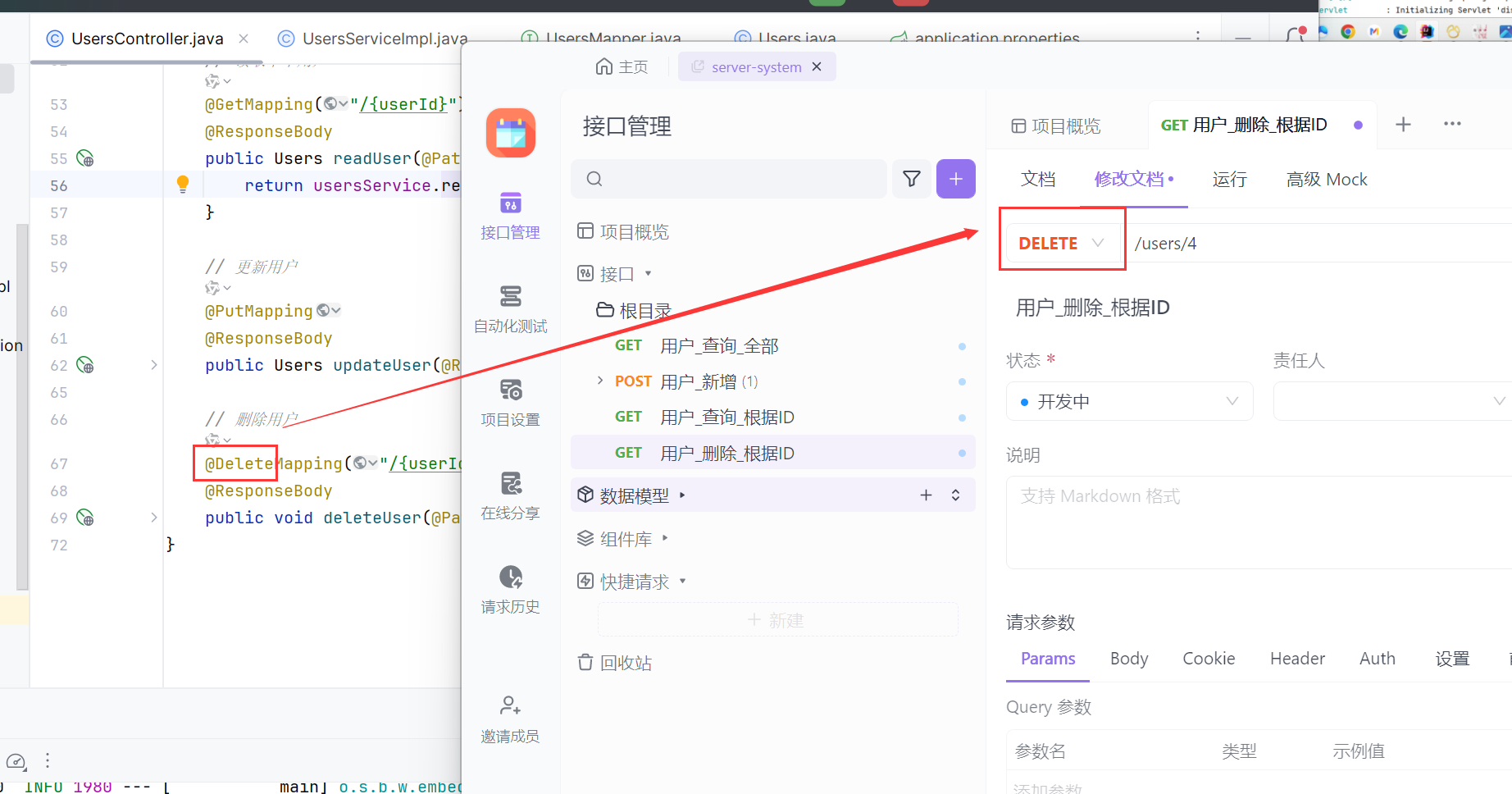
由于返回值是void,因此没有返回内容,这个我们后面完善。不管成功失败,都应该有个返回内容才是。
修改用户
要知道,我们不是每次修改,都把所有内容都修改了。
比如用户信息,我们只允许修改昵称和密码,但是修改昵称的时候不一定修改密码,修改密码的时候不一定修改昵称
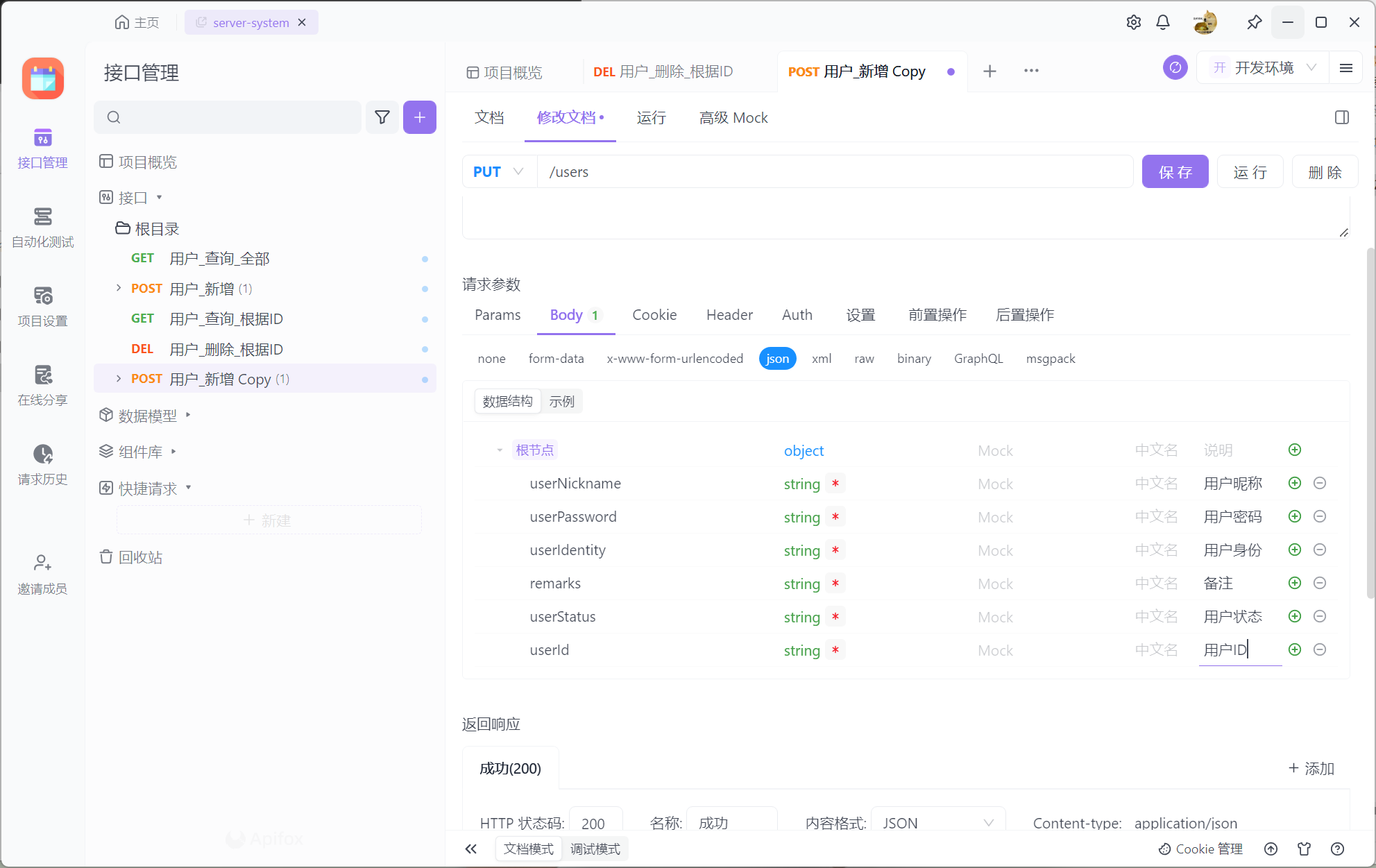
上面这些是允许修改的,id是必须的,其他的都不是必须的。
比如,我们给id 6改个姓名
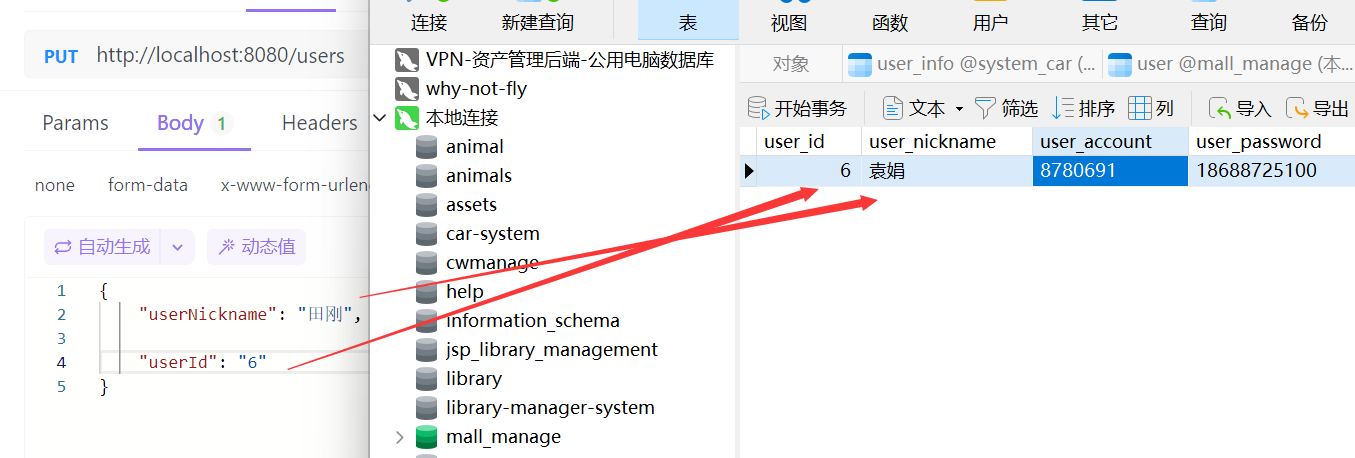
可以看到,后端发生了报错,我们没有填写其他参数
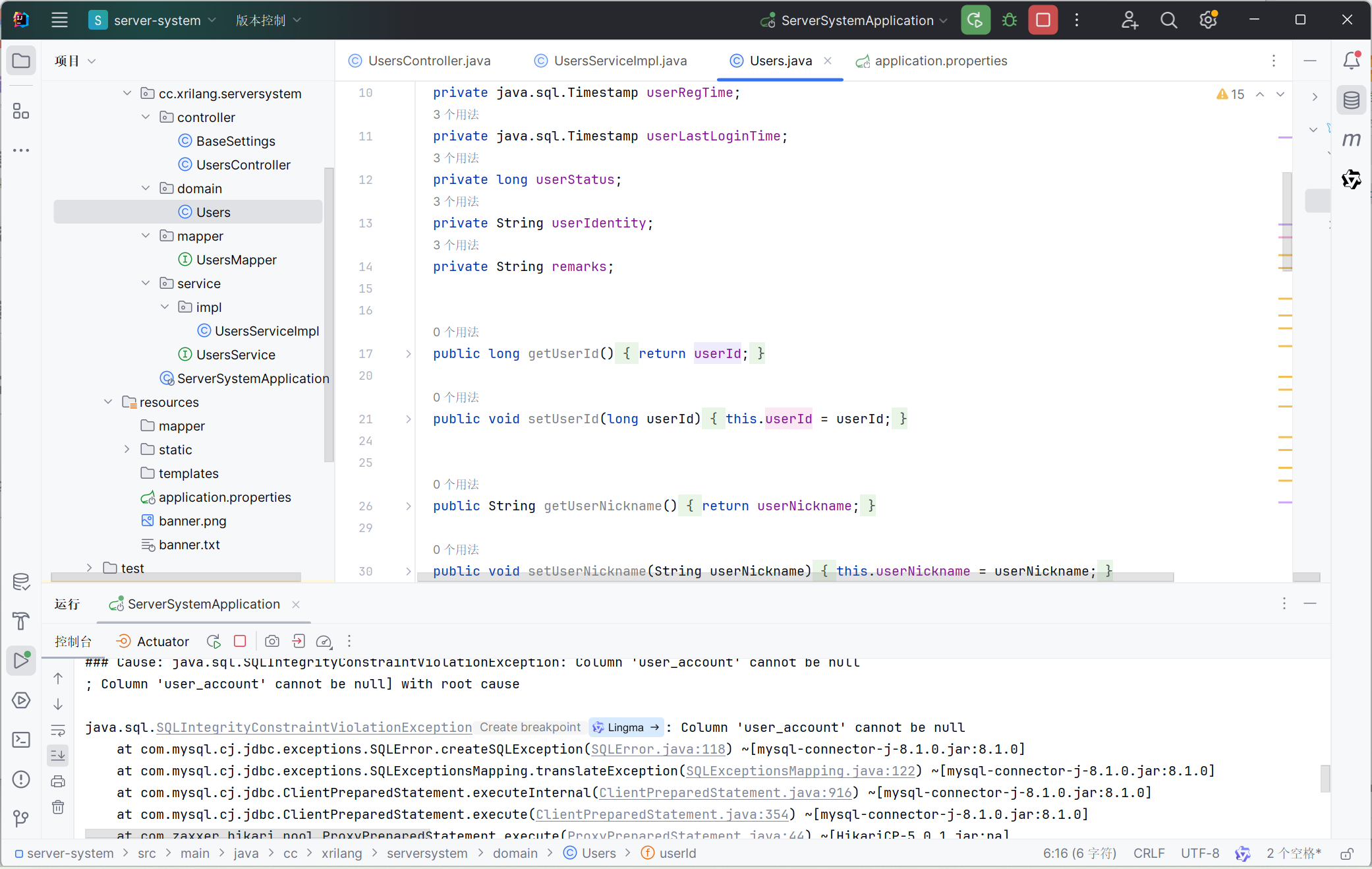
可是如果我光改个名字还得把所有参数填一遍,多麻烦,因此,我们在后端设置一下自动填充。
// 更新用户
@PutMapping
@ResponseBody
public Users updateUser(@RequestBody Users user) {
//获取参数的内容
String userNickname = user.getUserNickname();
String userPassword = user.getUserPassword();
String userIdentity = user.getUserIdentity();
Timestamp userLoginTime = user.getUserLastLoginTime();
String remarks = user.getRemarks();
long userStatus = user.getUserStatus();
long userId = user.getUserId();
//根据ID查出原本的数据
Users u= usersService.readUser(userId);
if (u == null) {
return null;
}
//将需要修改的内容替换进去
if (userNickname != null) {
u.setUserNickname(userNickname);
}
if (userPassword != null) {
u.setUserPassword(userPassword);
}
if (userIdentity != null) {
u.setUserIdentity(userIdentity);
}
if (userLoginTime != null) {
u.setUserLastLoginTime(userLoginTime);
}
if (remarks != null) {
u.setRemarks(remarks);
}
if (userStatus != 0) {
u.setUserStatus(userStatus);
}
return usersService.updateUser(u);
}
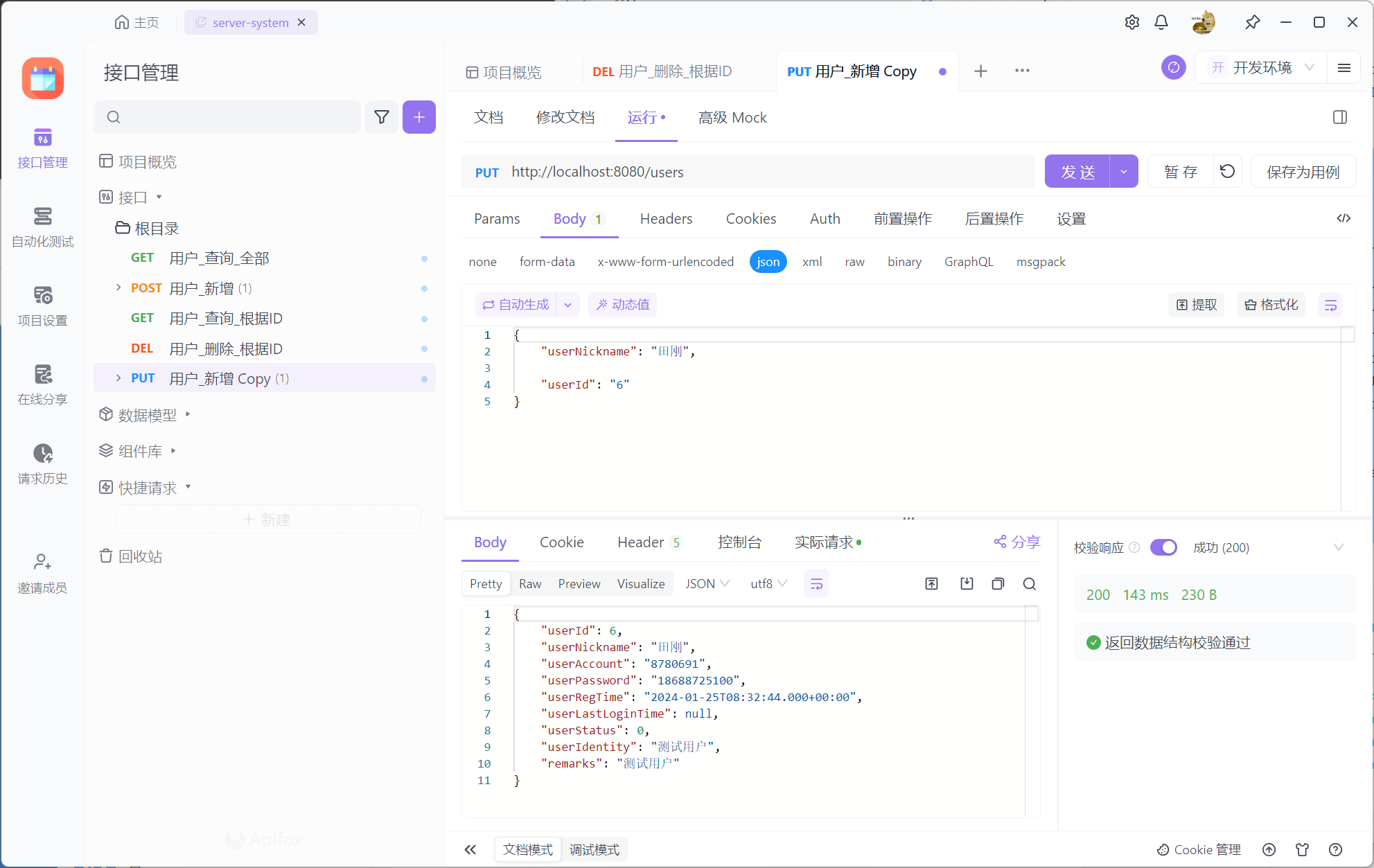
这时候,光改姓名也可以了
小结
你要知道,什么时候参数写在路径中,什么时候写在param中,什么时候写在body中
【参数写在哪?】
你要知道,选择什么请求方法(Get,Post,Put等等)
你要知道Get的优点缺点,Post优点缺点
你要知道Put有什么用,Opinion是什么(虽然这次没用到,但是你最好了解一下)
既然这是一个测试,那你就要从这个接口测试中发现问题(缺陷,或者不足)
然后对程序进行改进
增删改查的大致功能和测试先到这里了,后续我们继续完善后端的功能,比如实现密码加密存储,统一返回值的格式等等
作者:萌狼蓝天
QQ:3447902411(仅限技术交流,添加请说明方向)
转载请注明原文链接:https://www.cnblogs.com/mllt/p/17987804/project202401-7



